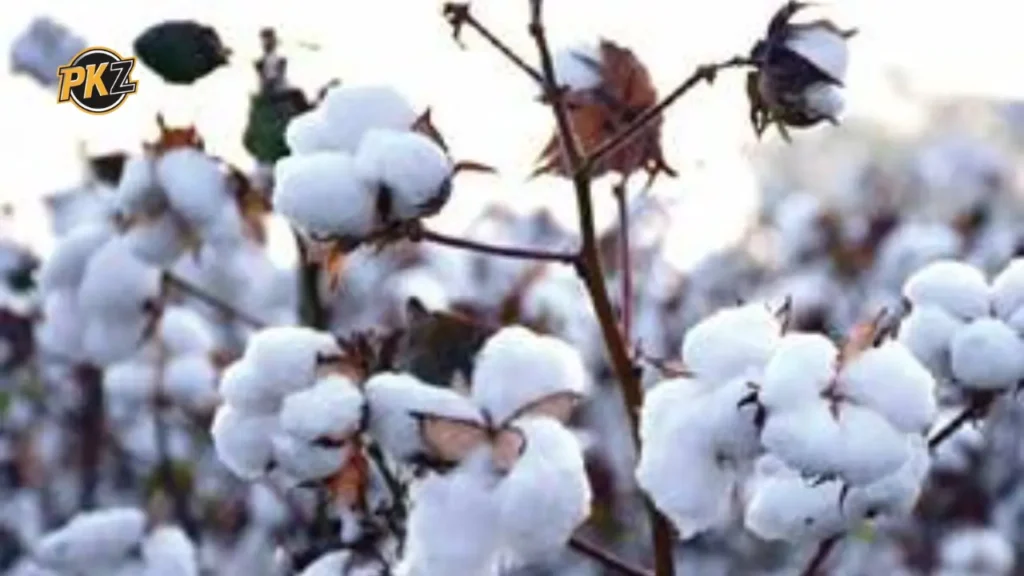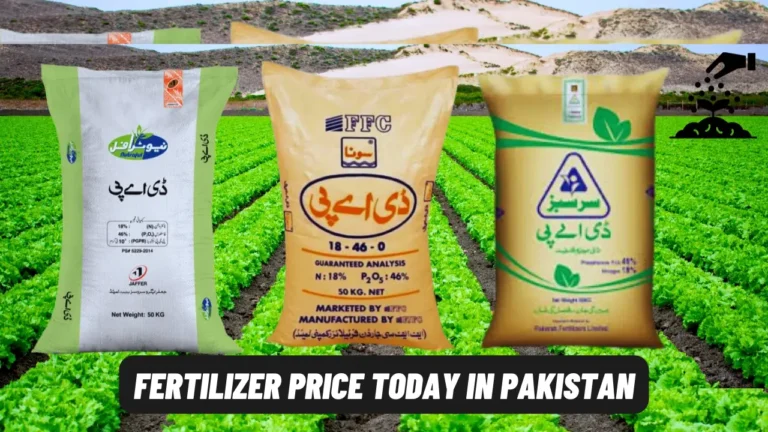Cotton Price in Pakistan – Today Phutti Rate 2024
Cotton Price in Pakistan plays a crucial role in the agricultural and textile sectors, with current rates ranging from PKR 7,600 to PKR 10,100 per 40 kilograms in 2024. These prices fluctuate due to factors such as market demand, supply conditions, and global trends.
Cotton is a cornerstone of Pakistan’s economy, contributing significantly to its GDP and employment. As one of the world’s largest cotton producers, the country’s textile industry relies heavily on this crop, impacting both domestic trade and exports.
Cotton Price in Pakistan Today Rate
As of Today, the cotton price in Pakistan depends on the region and market conditions.
Cotton Price in Punjab
Today Cotton Rates in Punjab
| Region | Price (PKR per 40 Kg) | Price per Kilogram (PKR) | Spot Rate (PKR) | Phutti Rate (PKR per 40 Kg) |
|---|---|---|---|---|
| Multan | 9,800 | 245 | 9,750 | 4,600 |
| Faisalabad | 9,600 | 240 | 9,550 | 4,550 |
| Bahawalpur | 9,700 | 242.5 | 9,650 | 4,580 |
| Sahiwal | 9,750 | 243.75 | 9,700 | 4,590 |
| Khanewal | 9,850 | 246.25 | 9,800 | 4,610 |
| Vehari | 9,620 | 240.5 | 9,570 | 4,570 |
| Mian Channu | 9,790 | 244.75 | 9,740 | 4,600 |
| Rahim Yar Khan | 9,880 | 247 | 9,830 | 4,620 |
| Layyah | 9,550 | 238.75 | 9,500 | 4,540 |
| Dera Ghazi Khan | 9,670 | 241.75 | 9,620 | 4,570 |
Also Read: Rice Prices in Pakistan
Cotton Price in Sindh
Today Cotton Rates in Sindh
| Region | Price (PKR per 40 Kg) | Price per Kilogram (PKR) | Spot Rate (PKR) | Phutti Rate (PKR per 40 Kg) |
|---|---|---|---|---|
| Karachi | 9,500 | 237.5 | 9,450 | 4,500 |
| Hyderabad | 9,400 | 235 | 9,350 | 4,450 |
| Sukkur | 9,300 | 232.5 | 9,250 | 4,400 |
| Mirpur Khas | 9,350 | 233.75 | 9,300 | 4,420 |
| Thatta | 9,250 | 231.25 | 9,200 | 4,390 |
| Nawabshah | 9,370 | 234.25 | 9,320 | 4,430 |
| Sanghar | 9,270 | 231.75 | 9,220 | 4,410 |
| Umerkot | 9,330 | 233.25 | 9,280 | 4,420 |
| Badin | 9,240 | 231 | 9,190 | 4,400 |
| Khairpur | 9,280 | 232 | 9,230 | 4,410 |

Cotton Price in KPK
Cotton Rate in KPK
| Region | Price (PKR per 40 Kg) | Price per Kilogram (PKR) | Spot Rate (PKR) | Phutti Rate (PKR per 40 Kg) |
|---|---|---|---|---|
| Peshawar | 9,400 | 235 | 9,350 | 4,450 |
| Abbottabad | 9,350 | 233.75 | 9,300 | 4,420 |
| Dera Ismail Khan | 9,300 | 232.5 | 9,250 | 4,400 |
| Mardan | 9,250 | 231.25 | 9,200 | 4,390 |
| Swat | 9,200 | 230 | 9,150 | 4,370 |
| Bannu | 9,150 | 228.75 | 9,100 | 4,360 |
| Kohat | 9,100 | 227.5 | 9,050 | 4,340 |
| Charsadda | 9,050 | 226.25 | 9,000 | 4,320 |
| Lower Dir | 9,000 | 225 | 8,950 | 4,300 |
| Mansehra | 8,950 | 223.75 | 8,900 | 4,280 |
Cotton Price in Balochistan
Cotton Rate in Balochistan
| Region | Price (PKR per 40 Kg) | Price per Kilogram (PKR) | Spot Rate (PKR) | Phutti Rate (PKR per 40 Kg) |
|---|---|---|---|---|
| Quetta | 9,500 | 237.5 | 9,450 | 4,500 |
| Sibi | 9,400 | 235 | 9,350 | 4,450 |
| Loralai | 9,300 | 232.5 | 9,250 | 4,400 |
| Mastung | 9,200 | 230 | 9,150 | 4,380 |
| Khuzdar | 9,100 | 227.5 | 9,050 | 4,360 |
| Ziarat | 9,050 | 226.25 | 9,000 | 4,340 |
| Panjgur | 9,000 | 225 | 8,950 | 4,320 |
| Naseerabad | 8,950 | 223.75 | 8,900 | 4,300 |
| Washuk | 8,900 | 222.5 | 8,850 | 4,280 |
| Dera Murad Jamali | 8,850 | 221.25 | 8,800 | 4,260 |
Also Read: Wheat Price in Pakistan
Factors Affecting Cotton Prices in Pakistan
Several factors influence cotton prices in Pakistan, causing frequent market fluctuations. These factors range from local farming conditions to global market dynamics.
- Supply and Demand Dynamics: Cotton prices rise when demand exceeds supply, especially during low production seasons.
- Role of Agricultural Land: The availability of agricultural land for cotton cultivation affects production volumes, with less land leading to reduced supply.
- Global Cotton Prices Impact: International market trends directly influence domestic prices, with global price hikes pushing local rates upward.
- The Role of Government Policies: Government policies on subsidies, exports, and support for cotton farmers play a crucial role in stabilizing or increasing cotton prices.
Overall Conclusion
Cotton remains a vital part of Pakistan’s economy, with its market influenced by factors such as supply, demand, and global trends. The cotton industry faces both challenges and opportunities that shape its future growth.
Government support, efficient farming practices, and global market conditions will continue to play a crucial role in the industry’s stability. Moving forward, sustainable farming techniques and improved infrastructure will be essential for the continued success of Pakistan’s cotton sector.






